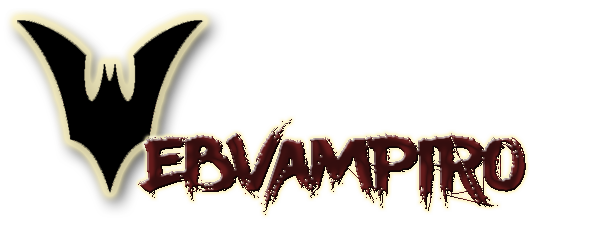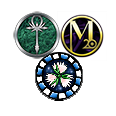For over a thousand years, a vampire subsect of Gnostic Christianity operated within Cainite society. This group, known to some as the Crimson Curia, to others as the Church of Caine, and to their enemies as the Cainite Heresy, posited that Caine was God’s divine angel of murder who had absorbed the soul of Christ, and that all vampires were his children and just as blessed. It was their divine mission to cull the weak, turn the living hell of the world into a heaven, dominate the Catholic Church, and usher in the Time of Caine, or third resurrection of Caine and Jesus, prophesized to arrive in the year 1239 CE.
The Cainite Heresy subverted the faith of mortals and vampires alike, its adherents believing themselves to be God’s chosen predators. Most importantly for other vampires, their actions inside and outside the mortal Church drew the attention of the Catholic Inquisition as well as hunters from the ranks of the Muslims of Iberia. In a rare show of unity, imams sided with churchmen and put the torch to the Cainite Heresy before their Time of Caine could arrive. The parent clan of most of these “Gnostics” was the Lasombra, and along with vampires of the Banu Haqim and Clan Brujah they hunted down the remaining stragglers.
The Church of Caine reached its end close to the time when mortal Gnosticism was declared a heresy punishable by death. Just as the Catholic Church had no more patience for rival faiths within its own sphere, the Lasombra ran out of tolerance for the Church of Caine’s increasingly aberrant views of Earth as hell, vampires as angels, and mortals as soulless cattle. Vampires who knew of the cult’s denouement celebrated its fall, and those who campaigned against it worked hard to scrub the cult’s name from the scant Cainite history books that recorded it.
The Heresy Rises
The idea of a Demiurge on high, responsible for all the evil in the world, alleviating of that responsibility the perpetrators of criminal acts, is a reassuring one to some. Vampires have a tendency to find excuses for their terrible acts, and when one can point elsewhere and say “He made me that way,” it — at least in the mind of the vampire — helps absolve them of their sins. Not that the modern Church of Caine are truly looking for absolution.
The re-emergence of the Gnostics in the modern nights is a subject of great mystery and conjecture. Few Kindred recall the original Cainite Heresy, most being Beckoned, succumbing to the sleep of ages, or destroyed in the last eight centuries. While some believe the rising Gnostic tide must be at the beck and call of methuselahs who wisely slept instead of facing the torches of the Inquisition 800 years ago, the modern Church of Caine shows few of the hallmarks of a methuselah-led cult. They don’t have a hierarchy based on age, they care little for lineage and clan, and their centralized power comes in the form of the renewed Crimson Curia — a council of priests — rather than a single, ancient figurehead.
Of course, the other conclusion is that Caine brought the Church back into being, though there’s no evidence to show he was ever around to see the Church in its original form, let alone approve of its purpose or methods. The idea that this cult may exist in direct service to Caine is a thought that undoubtedly troubles many Kindred, however, and leads a surprising number to join its ranks just to err on the side of caution. If the Dark Father is real, awake, and leading a sizable cult, better to be on his side.
What is known, is the Church of Caine has leaked out of the darkness again, with its words, beliefs, and practices becoming visible for the first time in centuries following the Beckoning’s commencement. The Church claims Caine himself calls his errant childer to fill his long-empty veins, and only the Church will be saved. Caine is the face, voice, and mind of the Demiurge in this hell on Earth, and he will not be denied. His angels will ascend with him once the rest of the world accepts their place as the meek and the fallen. Until then, his will be done.
Hell on Earth
The Church of Caine has long held the view that the world is divided into many planes of existence, with the Demiurge above all, and his angels governing the ranks of the unknowing. At each level of awareness, an individual grows closer to becoming an angel themselves, but these levels go down as well as up, and the farther down one descends, the closer they come to being damned forever.
This view may seem incompatible in a modern world, but to vampires of the Church, and mortals who believe themselves more enlightened — through intellect, influence, money, or even charm — it’s a rational view. It’s a class society imposed by a supreme power, and it makes sense to an amoral mindset. The Church of Caine for instance believes that while the Demiurge is all-seeing and all-knowing, he sends a representative (sometimes more than one) to Earth to mete out his will. Specifically, the Church posits, this representative is Caine, though infamous vampires such as Sutekh and Mithras may have been his angels as well, and Lilith certainly fits the mold of an angel who couldn’t help but abuse her power and fall. The Antediluvians were likewise angels, but fought Caine’s children and therefore fell from grace. They still deserve punishment for this. Likewise, humans with proficiency in angelic arts — whom the Tremere call mages — are of greater importance and value than the sleeping kine.
Earth is not a median point in this cosmic theory. Earth is hell, and receiving the Embrace is a step toward escaping that hell. All worlds layer on top of each other, so it is possible to exist in heaven and hell at the same time, but divine right grants one resilience against hell’s slings and arrows. At least, that’s the Church of Caine’s theory behind Disciplines such as Fortitude, and their reasoning for why all their powers are symbolic of the type a god might use against a mere mortal





